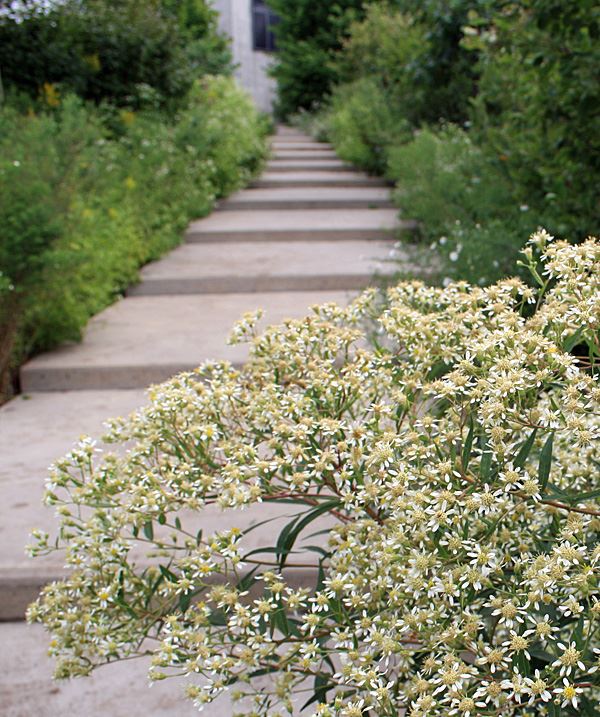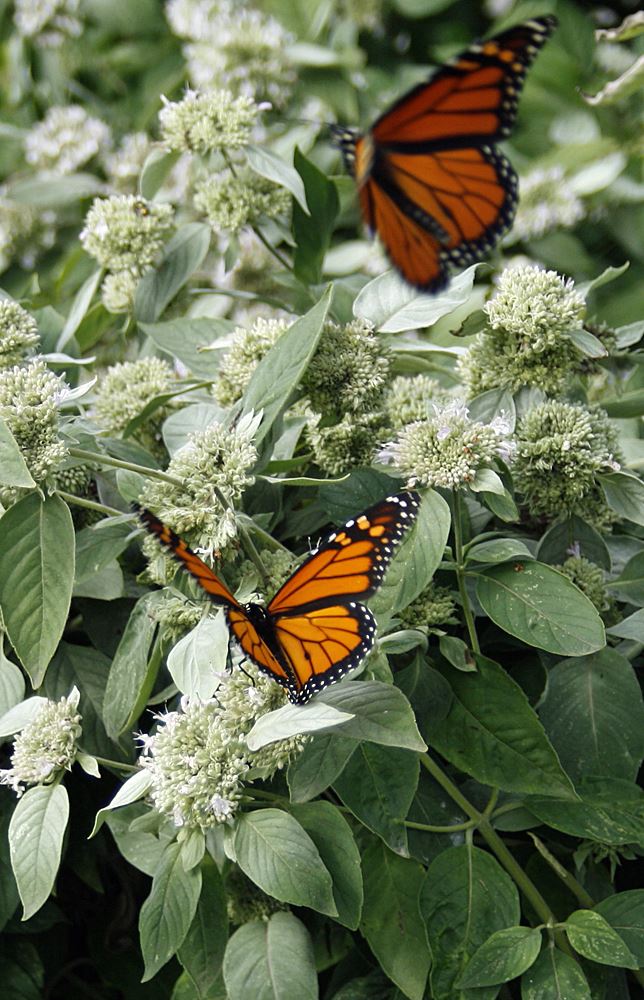- Home
- Resources
- SOUL Publications
- SOUL Organic Standard
The DRAFT 8th Edition of the Standards is now available for review. Download here.

Principal Aims of Organic Land Care
 Organic land care is the design, construction and maintenance of landscapes using practices and products that preserve and support the health of ecosystems and human communities.
Organic land care is the design, construction and maintenance of landscapes using practices and products that preserve and support the health of ecosystems and human communities.
Landscapes include natural and created environments including home gardens, parks, campuses, woodlands etc., in urban, rural and suburban settings under human management, and includes the use of edible and ornamental plants.
The Organic Land Care Practitioner:
- Works with natural systems and processes to encourage and enhance biological diversity and native habitats;
- Optimizes and maintains the life supporting properties of soil, air and water;
- Utilizes renewable, biodegradable and recycled materials from local sources and minimizes waste;
- Considers the wider social and ecological impacts of landscapes and the practices and products used to create and maintain them.
These principles are shared by the Northeast Organic Farming Association OLC, and the Society for Organic Urban Land Care. Please reference each organization’s policies and standards to learn how these principles are applied.
Important Note:
This web page includes the section of the Organic Land Care standard that outlines practices that are required, recommended and prohibited in organic land care.
The complete Organic Land Care Standard, which includes the list of the resources and experts that contributed to the content and creation of the Standard, a glossary of definitions and the list of permitted and restricted organic land care substances and materials, can be downloaded in PDF format here.
Guide to the Use of the Standard
This standard was developed by the Society for Organic Urban Land Care (SOUL) in response to the need for clear guidelines for the creation and maintenance of landscapes for environmental, recreational, ornamental and food production reasons, following organic principles.
This standard aims to:
- provide a clear definition of the practices, materials and substances employed in Organic land care;
- provide guidance to Organic land care practitioners in their decision making processes;
- raise the awareness of the ecological requirements of landscapes;
- provide credibility for Organic land care professionals and to protect the public from misleading practices and claims.
This standard is not intended to provide all the information needed for successful Organic land care. Such information must be obtained through formal education and practical experience.
This standard has been drafted to address Organic land care requirements in diverse environments across many geographic regions. The requirements under this standard must be implemented with utmost sensitivity to local environmental conditions.
This 7th Edition is based on the 2015 version of the Canadian Organic Standards and the 2017 proposed amendments to those standards.
This standard is the Code of Conduct adopted by Organic land care professionals accredited and certified by SOUL across Canada. This document also acts as a guideline and resource for all who are interested in Organic land care, including organic food production.
Where any requirement under this standard conflicts with a legislated requirement in any jurisdiction, the legislated requirement shall prevail.

Top | Scope | Practices |Requirements | Resource Management | Landscaping | Food Production
The Organic Land Care Standard
Organic Land Care Practices

This standard classifies practices according to their ability to achieve the principal aims of Organic land care. As such it sets out objectives, but does not generally prescribe how these objectives are to be achieved, as each landscape is unique, and specific activities or methods may produce different results in different circumstances.
Example:
This standard does not discuss the merits of specific methods for pruning plants. Instead it only directs that any landscape maintenance practice “avoid or minimize permanent injury to plants”, and “prevent the introduction or spread of undesired organisms”.
Conversely, seemingly identical situations may require different intervention.
Example:
The required landscape design practice “protecting and enhancing biodiversity” can be achieved through many different methods, including: diverse multi-storey plantings, creating wildlife habitat, increasing soil organic matter, protecting the landscape from traffic, introducing predacious insects, etc.
Organic land care practitioners must have the knowledge and experience to choose the most appropriate methods and activities to achieve the landscape design and management objectives under this standard.
They must also be aware of federal and provincial regulations, and municipal bylaws.
Classification of organic land care practices
This standard classifies practices as required, preferred, and prohibited.
| REQUIRED |
- Organic land care practitioners shall use these practices |
| PREFERRED | - Organic land care practitioners should use these practices where possible |
|
PROHIBITED |
- Organic land care practitioners shall not use these practices |
Top | Scope | Practices |Requirements | Resource Management | Landscaping | Food Production
General Requirements
| REQUIRED |
- Complying with all legislated requirements - Employing practices for their ability to enhance and support natural processes within healthy landscape ecosystems - Minimizing contamination of water, air and soil |
| PREFERRED | - Preparing and / or working to a landscape management plan |
|
PROHIBITED |
- Using substances and materials prohibited under the Standard (see the Substances and Materials List) |
Resource Management
Water Management
Water circulates through the environment, resulting in the adaptation of whole ecosystems to the relative presence and quality of water. Any practices that affect the quantity, quality or direction of flow of water directly affect not only the immediate environment, but ecosystems far removed from the origin of the disturbance.
For instance, applying manure can affect surface or ground water over a large area; redirecting natural water courses, or interrupting the circulation of water, affects whole ecosystems.
Landscape activities with a direct impact on water include:
- changing grades
- changing drainage patterns
- collecting and storing water
- modifying the soil environment
- changing the vegetation
- installing structures and impermeable surfaces
- irrigating landscapes
- using and disposing substances that dissolve in, or are carried with water.
None of these activities are intrinsically right or wrong, but must be employed for their ability to achieve the landscape design and management objectives with minimal impact on the quality and natural circulation of water.
| REQUIRED |
- Providing the appropriate quantity and quality of water to maintain the health of the landscape - Assessing the quality of irrigation water and ensuring it is safe for the intended crops or landscape - Treatment and/or sanitation of recycled, filtered or collected water through approved means to meet regulatory water quality parameters |
| PREFERRED | - Conserving and retaining water in the landscape through appropriate grades, structures, soil management, vegetation and water use where permitted under legislation |
|
PROHIBITED |
- Creating grades and drainage patterns that result in water being discharged onto neighbouring property without prior consent - Using water in a manner that results in the degradation of soil fertility or biodiversity - Draining or filling aquatic or wetland habitats, or degrading riparian areas |
Air Management
Life on earth, as we know it, has evolved because of the relative presence and combination of specific gases contained in the air. Air also acts as a carrier for small particles and organisms.
All processes and activities affect the composition and movement of air, and the presence and quantities of particles and organisms carried in the air. This affects the abundance, distribution and health of living organisms.
Landscape management activities with a direct impact on air include:
- selecting and placing plants and structures
- disposing of waste, including burning, dumping and composting
- storing and using soil amendments, fertilizers and pesticides
- using power tools
- compacting the soil
- changing water conditions in the soil and air
- using equipment and machinery
- emitting substances into the air
All landscape management practices must be employed for their ability to achieve the landscape design and management objectives in a way that protects and enhances the quality and circulation of air.
| REQUIRED |
- Optimizing the circulation of air throughout the environment above and below ground |
| PREFERRED |
- Minimizing detrimental emissions into the air
- Minimizing noise |
|
PROHIBITED |
- Introducing harmful or toxic substances into atmospheric or soil-bound air |
Soil Management
The soil is a complex ecosystem in its own right: a diverse and interdependent biological, chemical and structural system composed of minerals, organic substances, air, water, microorganisms, plants and animals. Yet its processes are intricately linked with the larger ecosystem, of which soil is but one of many interrelated parts.
The structural and mineral components of the soil directly affect the diversity and health of the organisms dwelling there, including plants, while their biological processes in turn alter the structure and mineral composition of the soil. Each organism makes a unique contribution to this process: it is a delicate yet dynamic balance, fuelled by the constant recycling of organic matter.
The reduction of organic matter within the system results in a direct reduction of the biological activity of the soil. This in turn results in reduced plant growth and health, and the reduced vitality of the ecosystem as a whole.
It is a principal aim of Organic land care to work as much as possible within closed systems with regard to organic matter and nutrient cycling, as organic matter introduced into one system must inevitably be removed from another. Such practice is unsustainable from an overall ecological perspective.
Landscape management activities with a direct impact on soil include:
- changing the organic matter content of the soil
- changing the soil structure, texture and fertility
- changing the water conditions within the environment
- changing biodiversity above ground
All landscape management practices must be evaluated for their ability to achieve the desired landscape design and management objectives in a way that protects and enhances the long term biological activity of the soil.
| REQUIRED |
- Maintaining or increasing soil organic matter content - Preventing soil erosion - Preventing and / or relieving soil compaction in planted areas - Confirming nutrient deficiency by soil or tissue analysis before applying non-organic mineral nutrients - In non-rural settings ensure compost systems do not attract or harbour rodents |
| PREFERRED |
- Using the existing soil from the site - Recycling organic matter in place - Composting and reusing organic matter on site - Increasing biodiversity above and below ground |
|
PROHIBITED |
- Applying materials that inhibit the long term cycling of organic matter, air and water in planted areas - Applying materials, or using practices that result in the degradation of soil fertility or soil structure in planted areas - Applying materials, or using practices that result in the degradation of soil biodiversity in planted areas - Disposing of organic matter in waste disposal facilities where composting alternatives exist |
Top | Scope | Practices |Requirements | Resource Management | Landscaping | Food Production

